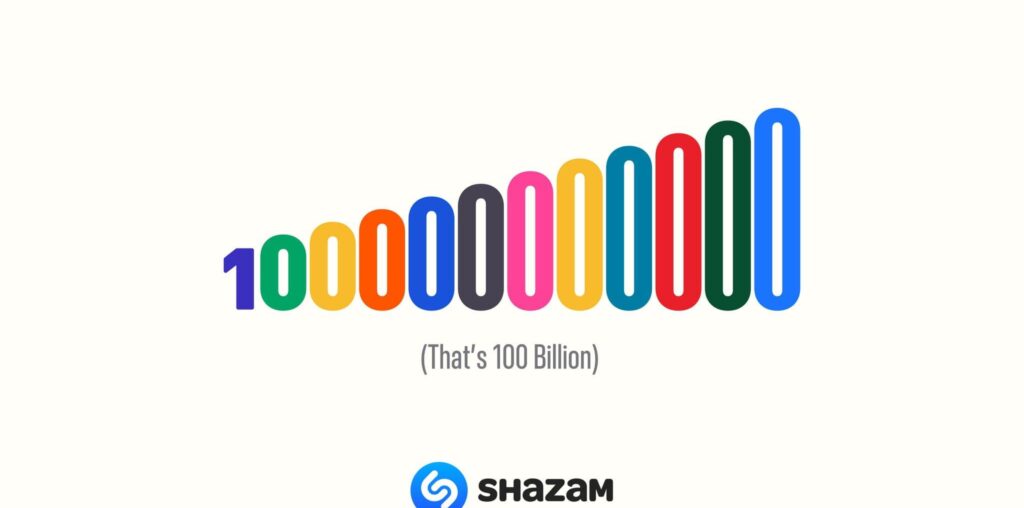According to Apple, Shazam has recognized over 100 billion songs, a staggering number of songs. To help put the milestone in perspective Apple shared some statistics:
- That’s equivalent to 12 songs identified for every person on Earth.
A person would need to use Shazam to identify a song every second for 3,168 years to reach 100 billion.
That’s more than 2,200x the number of identifications of Shazam’s top song ever, “Dance Monkey,” with over 45 million tags.
Shazam Predictions 2023 alum Benson Boone’s “Beautiful Things” was the first track released this year to hit 10 million recognitions, and the fastest, doing so in 178 days. At that pace, it would take more than 4,800 years for it to hit 100 billion.
Those are fun statistics, but what’s equally incredible to me is the fact that Shazam hit the 50 billion mark just over three years ago in 2021. The app obviously isn’t slowing down, despite being older than the iPhone and App Store themselves:
Shazam launched in 2002 as an SMS service in the UK, and back then, music fans would dial 2580, hold up their phones to identify music, and receive the song name and artist via text message. Shazam’s following and influence continued to grow in the years that followed, but it was the 2008 debut of the App Store and introduction of Shazam’s iOS app that brought its music recognition technology to millions of users. By the summer of 2011, Shazam had already recognized over 1 billion songs.
Fun fact: The first song ever matched by Shazam was Jeepster by T. Rex. It makes you wonder what the 100 billionth song was. Also, if you’d like to listen to the top 100 Shazamed songs, Apple has a playlist for the occasion:
Shazam has come a long way from its SMS roots and is now sprinkled throughout Apple’s OSes. It’s a testament to how a fundamentally great idea can evolve alongside technological advances.

Access Extra Content and Perks
Founded in 2015, Club MacStories has delivered exclusive content every week for nearly a decade.
What started with weekly and monthly email newsletters has blossomed into a family of memberships designed every MacStories fan.
Club MacStories: Weekly and monthly newsletters via email and the web that are brimming with apps, tips, automation workflows, longform writing, early access to the MacStories Unwind podcast, periodic giveaways, and more;
Club MacStories+: Everything that Club MacStories offers, plus an active Discord community, advanced search and custom RSS features for exploring the Club’s entire back catalog, bonus columns, and dozens of app discounts;
Club Premier: All of the above and AppStories+, an extended version of our flagship podcast that’s delivered early, ad-free, and in high-bitrate audio.

